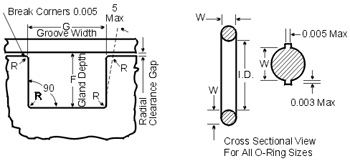We have variety of O-Ring kits of UK and US standard sizes
O Ring Kits contains the most often used Imperial sizes of AS-568 standard size O-Rings , our O-Ring Kit is industry standard. O-Ring kit contains 30 sizes of o-rings in total quantity 382 pieces of o-rings of the most often used AS568 Standard sizes. The outside top cover has detailed, labels indicating the sizes and quantities of the o-rings in each compartment , and the highly attractive red styrene box features both post and recess styles of o-ring retention.
Material : Nitrile (NBR) with 70 Shore A Hardness
Orders are shipped from our stock within 3-5 days .
For Further Details Email us : sales@fitcoseals.com
www.fitcoseals.com
www.oringstore.com
O Ring Kits contains the most often used Imperial sizes of AS-568 standard size O-Rings , our O-Ring Kit is industry standard. O-Ring kit contains 30 sizes of o-rings in total quantity 382 pieces of o-rings of the most often used AS568 Standard sizes. The outside top cover has detailed, labels indicating the sizes and quantities of the o-rings in each compartment , and the highly attractive red styrene box features both post and recess styles of o-ring retention.
 |
| Fitco O-Ring Kits |
Material : Nitrile (NBR) with 70 Shore A Hardness
Orders are shipped from our stock within 3-5 days .
For Further Details Email us : sales@fitcoseals.com
www.fitcoseals.com
www.oringstore.com

